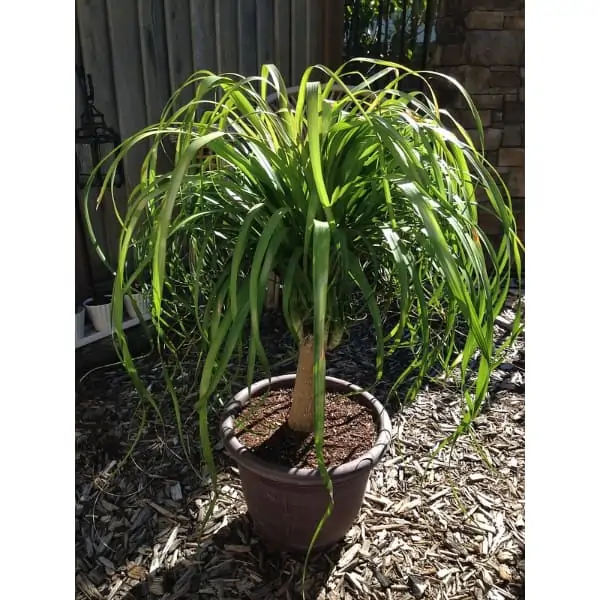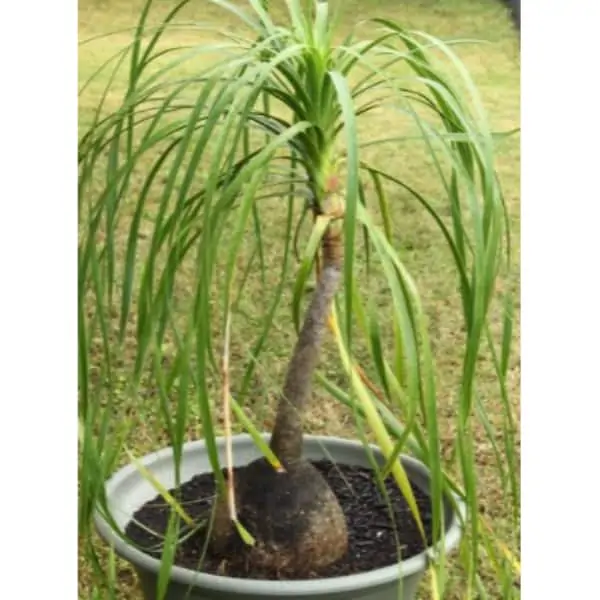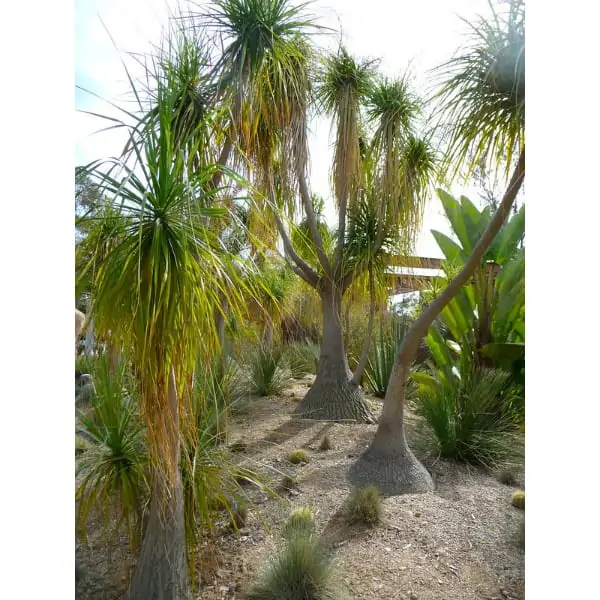Ponytail Palm Care Guide For Your Indoor Palm Trees
Learn how to look after your palm tree with this ponytail palm care guide! You will find everything you need, plus some bonus tips right here!
Ponytail Palm Care: The Basics
The ponytail palm gets its name from the shape it grows its leaves, thin and gathered at the top of the trunk, directly from it, resembling a ponytail. Another common name for it is “elephant’s foot”, due to the shape in which its trunk grows in nature. This shape, widening at the bottom, making contact with the soil on a wide area, is most visible on older plants and you probably will only see it after years of keeping this plant in a pot. The palm uses this part of the trunk to store water and withstand the harsh conditions of the desert.
This palm tree originates from Mexico and it is used to extremely dry weather. This is why it is a great plant to keep indoors and practically forget about it. It is a great addition to any corner! It is showy, fills the space, and requires virtually no care. Virtually no care does not, however, mean no care at all, so here is a comprehensive guide to how to take care of this plant. Though it counts as a large indoor plant because it can grow as tall as a room, you can keep the ponytail palm as a small plant by limiting pot size.
Ponytail Palm Care Guide
Water
The ponytail palm comes from a desert area, so it needs very little water. It uses its trunk to store moisture and so it needs to be watered only once every other week or so. Treat it more like you would a succulent than any other potted plant, but do not mist. It does not absorb moisture through its thin leaves and any droplets of water that stay on the leaves while exposed to the sun will lead to scorching and browning spots. Instead, water the soil and allow the water to flow out of the pot. Let the soil dry completely before watering again. And remember, underwatering is less dangerous than overwatering!
Light
Being a desert plant, the ponytail palm is used to bright light and direct sun. Allow it to sit in as much sun as possible for rapid growth. The plant will tolerate lower light as well, it will simply grow slower in indirect light or less sun. If you keep it as a potted plant, you can even let it spend summers outside. If it is warm enough in your area, that is. It will appreciate the sunbath, but remember to move the pot gradually, both from inside out and in reverse. In too little sun, the leaves will start to yellow, but you still have time to save the palm by moving it closer to a window!
Temperature
The ponytail palm is not pretentious when it comes to temperatures either. In the desert, it can get surprisingly cold at night and the days are scorching, so it can withstand temperature variations. Make sure the temperature in the room where you keep it (or outside if you move it there) does not drop below 45°F (7°C). This will ensure that your palm tree grows happy and healthy. Make sure there is no risk of freezing, as the frost can also develop inside the trunk and soil, destroying the plant. Keep the palm warm but away from heating vents that can scorch and dry the air too much even for its desert preferences!
Soil
The soil in which you plant your palm tree is essential. Make sure you pick a sandy soil, well-draining, and with some organic material in it for fertilization. Ponytail palms prefer a neutral soil, so pick the best one from this list! make sure the pot you plant it in is ceramic and unglazed, to allow for proper drainage and for the soil to breathe. A well-draining soil will prevent root rot and other diseases the palm might develop. When repotting, only increase the pot size by one inch in diameter to be sure you do not add too much soil at a time and the roots have time to develop. Only repot if you want for it to grow larger, it will be fine with tightly balled roots!
Fertilization
Even with little watering, the soil will be washed clean on nutrients and minerals as time passes. On top of what the palm tree consumes, every watering washes away minerals and nutrients. This is who it is important to fertilize with an organic fertilizer. You can use a liquid fertilizer in spring and summer, or you can use a slow-release fertilizer once a year. Do not fertilize for at least a month after repotting and make sure you don’t overfertilize. Even organic fertilizers can burn the root system and damage the plant. Pick your favorite fertilizer and you will have a happy, healthy, green palm tree!
Pruning & propagation
The ponytail palm needs little pruning, and the ends of the leaves should never be cut. They will only brown and be left with a straight end, unlike the natural shape of the leaves. To keep it at a specific height, you can trim off new growth at the top, which may encourage it to sprout stems from the lower area. But the best way to control the size of the ponytail palm is to control the size of the pot it grows in. In terms of propagating, it can be propagated from seeds, but the easiest way to multiply it is to propagate it through pups, like Aloe Vera and other succulents.
Ponytail Palm Care Summary
Water
Little. Allow soil to dry completelyLight
Full sun to bright indirectTemperature
No lower than 45°F (7°C)Soil
Rich, well-drainingDifficulty
EasyToxicity
Non-toxicExtra Ponytail Palm Care Tips & Tricks
When growing a ponytail palm, keep in mind that it is a succulent and a dry environment plant, so ideally do not keep it next to the plants that need constant moisture, especially if you either mist them or keep them in moisture plates. Instead, take advantage of its ability to survive low light environments too and place it in a corner of the room. Watch out for pests too, because the palm is prone to mealybugs, scale mites, and other pesky crawlers. As a rule of thumb, when you bring a new plant at home, quarantine it before putting it with the rest of your indoor garden to prevent it from bringing any pests.
After Gardening…
Don’t forget to let us know how this ponytail palm care guide has helped you be a better parent to your greens! The comments section is open for your stories and we would like to hear your feedback. Happy gardening!






